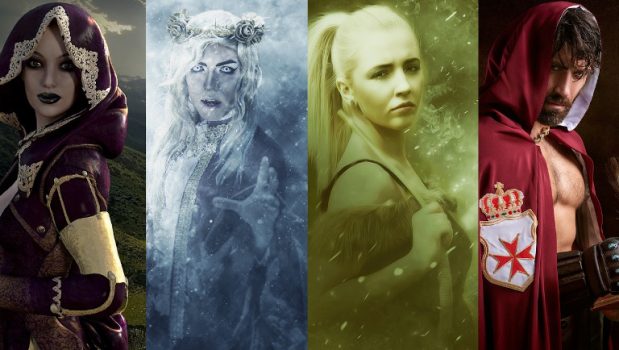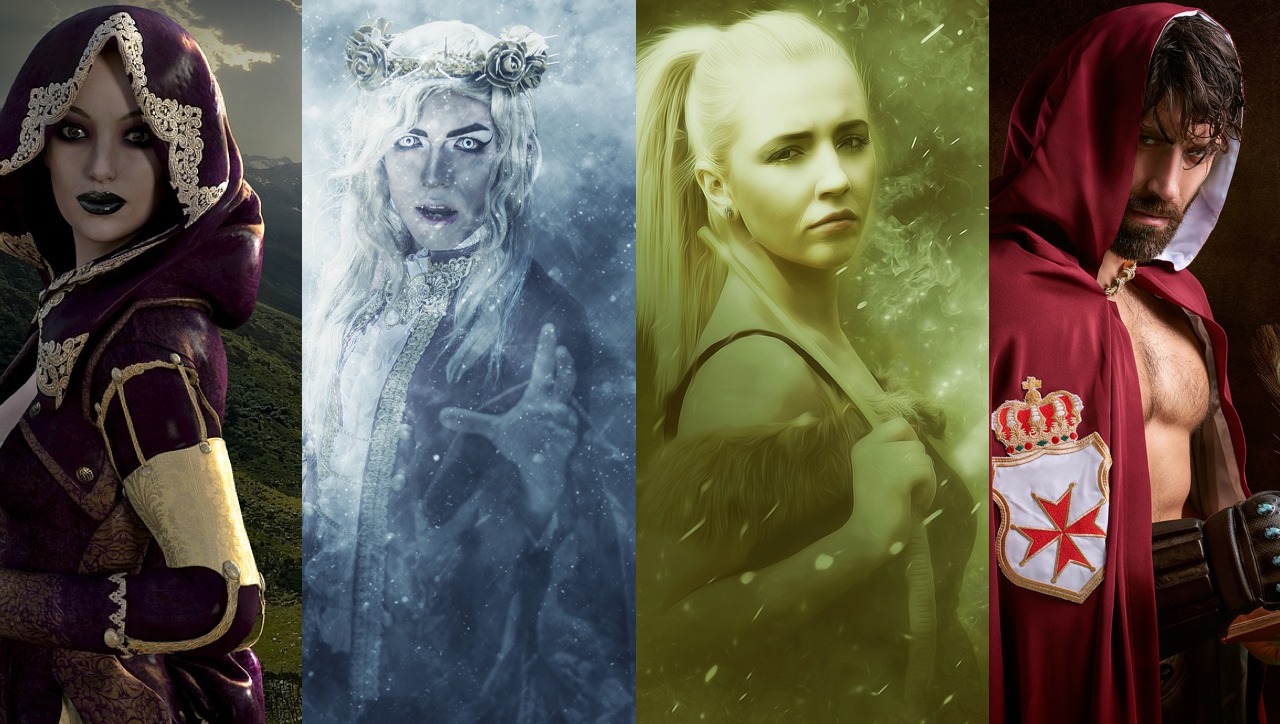
In the previous article, Shaping the Main Character of Your Fantasy Novel, you looked at the different big-picture options for what kind of person your main character is, and started thinking about how this person is going to change and grow during the story. Now it’s time to get those details nailed down before you get into writing your fantasy novel. There is a lot to fill in here, but remember that the more well-rounded and dynamic your character is, the more your readers will relate and stay engaged with the story!
The Basics of Main Character Development
Below are various basic details you need to decide in order to get the level of detail you need in main character development. The more you can decide now about your main character, the easier it will be to incorporate into your fantasy novel..
- Type of Being: You might not have been thinking at this fundamental level, but there’s no reason why your main character has to be human. The main character in Watership Down is a rabbit! Your main character could be an elf, an orc, or something entirely new. This is fantasy, after all! But if you choose something other than human, you’ll have a lot more thinking to do in order to figure out what things are like from the perspective of that kind of being.
- Race/Ethnicity: If it’s important for your main character to have a particular race or ethnicity, now is the time to decide what that is.
- Name/Nickname: Naming your main character can be trickier than you might think. This might deserve an article all its own in the future. For now, keep it relatively simple and straightforward. You don’t want your readers stumbling over the name every time they have to read it, which for most people includes hearing it being “spoken” in their heads, so make it something that’s easy to pronounce as well!
- Age: If you’re writing a YA fantasy novel, keep in mind that your main character should be in the YA age-range of 12-18 (give or take a year or two). Otherwise, any age is fair game.
- General Physical Description: Decision points here include height, weight, build, hair color/style, and eye color. Right-handed or left-handed? Is there anything unusual or different (scars, tattoos, birthmarks, disabilities, etc.).
- Overall Health Status: Any special medical conditions that might come into play, such as asthma or a heart condition?
- General Style of Appearance: What “look” does the character have in terms of clothing, makeup and so on. Piercings? Glasses? Facial hair?
- Relationship Status: In a relationship now or not? Do readers need to know any back-story there?
- Personality: You’ve already chosen one or more character archetypes for this person, but how does that play out in terms of their day-to-day personality traits, sense of humor, temperament, conscientiousness, manners, etc. And how do this character see themselves?
- Abilities: Does the character already have any special abilities, paranormal powers, or magic skills? Consider whether any will be gained during the course of the story. Does the character like having special abilities or is it more like a burden? Do others know about any special powers and if so, how do they react?
Background Details for Main Character Development
Now it’s time to fill in some back-story about this main character of yours:
- Family Background: Where did the character grow up and what was it like there? Who are the character’s parents and siblings? What else is important to know about the character’s immediate family? Is it important to know anything about the character’s deeper family heritage and ancestry? What is there from the character’s upbringing that readers need to know or find out about?
- Friends: Who does the character consider to be friends and what do readers need to know about them? If any of these friends are going to be substantial characters in the novel, you’ll go through a separate, though less extensive, character development process for them.
- Employment: Does the character have a job and is it important for readers to know anything about it?
- Religion: Does the character have any particular religious beliefs or affiliations readers need to know about, including any back-story that goes along with it?
- Interests/Hobbies: If your character has any down-time in your novel, it’s useful to know ahead of time how it might be spent!
- Education: How well-educated (or not) is this character? Do readers need to know the character’s attitude toward education and school?
You could go into a lot more detail with all kinds of other questions to find out more about your main character, but the above gives you enough of an idea to add in anything else you think of that might be important.
The Main Character Arc in Your Fantasy Novel
The next step is to really figure out how your main character is going to change throughout the course of the story. What fascinates readers the most is seeing how a character is transformed by what they experience in the story. One way to think about this is to go back to the nine basic plots and the one you’ve chosen. Each of them has a structure for how they unfold (except for comedy and tragedy, which can apply to any plot). The article about those basic plots didn’t get into the structure of each one, but seeing how that plot unfolds can be very helpful in spurring your thoughts about how your character will change. Just use your favorite search engine and type in “basic story plots” and you’ll quickly find a summary of how each unfolds. Then you can consider the following questions:
- What is it your main character wants the most?
- Why does your main character want it?
- How far is your main character willing to go to get it?
- If your main character fails, what are the consequences?
- If your main character succeeds, what will happen then?
Some people might say your fantasy novel doesn’t need a “character arc.” Not true! The stories that have the deepest effect on people are the ones where they get see how the main character changes as a result of their experiences. Think about Bilbo Baggins in The Hobbit. He was very much a “reluctant hero” at the beginning of the story, but by the end he was a true adventurer who had shown great courage when it was needed most.
In a YA fantasy novel, there’s most often a strong “coming-of-age” element for the main character who, given their age at the start of the novel, will mature substantially during the course of the story. Think about how much Harry Potter grew up and matured over the course of the books about him by J. K. Rowling. For the non-YA fantasy novel, there can and should be some kind of character arch about how they change, whether it be for better or worse. When you have the structure for your basic plot, think about how the experiences in each “act” of the story will affect your main character. Also be sure to capture what your main character is like at the beginning of your novel so there is enough contrast to what the character is like in each “act” of the story. What lessons has the character learned along the way?
Now that you are well on your way to having a well-rounded, dynamic main character, your next step in writing your fantasy novel will be to decide on its setting, which will be the subject of the next article.
Try tooleybook, the free tool created for writing books. It takes less than 30 seconds to create an account and start writing.
With tooleybook you can view timelines, chapter purpose, word count, track time and place, tag scenes, move and organize scenes and more...More Info


